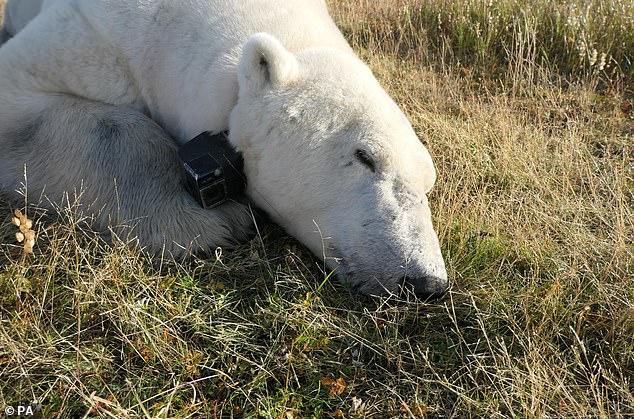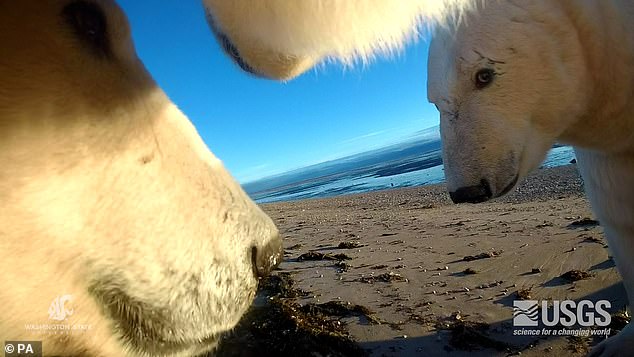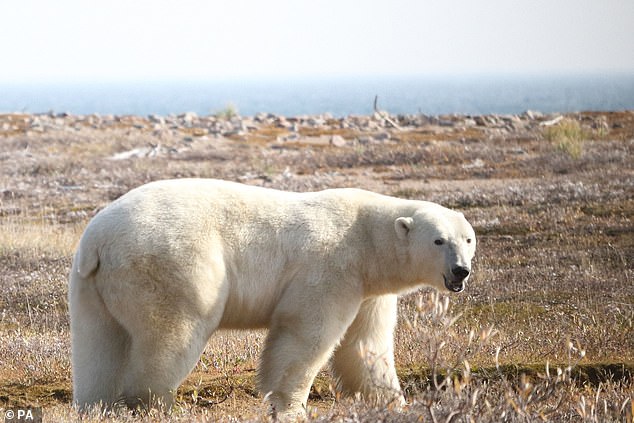Polar bears are at greater risk of extinction than ever as they are unlikely to adapt to longer Arctic summers, new research warns.
The longer the giant predator spends stranded on land and away from sea ice, the greater the risk of starvation, scientists said.
Polar bears live in arctic regions such as Canada, Alaska, Russia, Greenland and Norway.
Much of polar bears’ time is spent on sea ice, where they hunt seals, rest, reproduce, and care for their young.
For three summer weeks, 20 polar bears closely observed by scientists tested different ways to maintain energy reserves, including resting, scavenging and foraging.
However, almost all of them lost weight quickly: on average about one kilogram (2.2 pounds) per day, according to findings published in the journal Nature Communications.
For three summer weeks, 20 polar bears closely observed by scientists tested different ways to maintain energy reserves, including resting, scavenging and foraging.
Some experts have speculated that polar bears could adapt to longer ice-free seasons due to climate warming by acting like their brown bear relatives and resting or eating terrestrial foods.
But the polar bears in the new study tried versions of both strategies, with little success. Study co-author Dr. Charles Robbins, director of the Bear Center at Washington State University, said: “Neither strategy will allow polar bears to exist on land beyond a certain period of time.”
‘Even the bears that foraged for food lost body weight at the same rate as those that lay down.
‘Polar bears are not brown bears in white coats.
“They are very, very different.” Generally larger than grizzly bears, adult male polar bears can reach 10 feet in length and weigh 1,500 lbs (680 kilos) compared to eight feet and 800 lbs (363 kilos) for grizzly bears.
To maintain their mass, polar bears rely on energy-rich seal blubber, which they capture best on ice.

Little was known about the energy expenditure and behavior of polar bears when they were confined to land, so researchers used collars equipped with video cameras and GPS to track them during the summer in the western Hudson Bay region in Manitoba, Canada.
Little was known about the energy expenditure and behavior of polar bears when they were confined to land, so researchers used collars equipped with video cameras and GPS to track them during the summer in the western Hudson Bay region in Manitoba, Canada.
The team wanted to see what the specialized ice hunters ate and did during the long time they were on land when their preferred prey, seals, was out of reach.
The researchers also weighed the bears before and after the observation period and measured their energy expenditure.
The study’s lead author, Dr. Anthony Pagano, a wildlife research biologist with the U.S. Geological Survey’s Polar Bear Research Program, said, “We found a real diversity of bear behaviors, and as a result, “We saw a diverse range of energy expenditures.”
He said many of the adult male polar bears simply lay down to conserve energy, burning calories at a rate similar to hibernation.
Others actively foraged and consumed bird and caribou carcasses, as well as berries, seaweed, and grasses.

However, almost all of them lost weight quickly: on average about one kilo (2.2 pounds) per day.
Overall, the researchers found a five-fold range in energy expenditure from an adult male who rested 98 percent of the time to the most active one who covered 205 miles (330 kilometers).
Some adult females spent up to 40 percent of their time searching for food, but the researchers found that all that activity wasn’t worth it. Dr Pagano said: “Terrestrial foods gave them some energetic benefit, but ultimately the bears had to expend more energy to access those resources.” Three polar bears swam lengths: one swam 175 kilometers (about 110 miles) across the bay.
Two found carcasses in the water, a beluga and a seal, but neither bear was able to feed on their finds while swimming or bring them back to land.
Only one of the 20 bears gained weight after stumbling upon a dead marine mammal on land.
The study focused on the southernmost extent of polar bears’ range in western Hudson Bay, where climate warming is likely affecting bears at a faster rate than other Arctic regions.
The polar bear population in the area has already decreased by approximately 30 percent since 1987.
The new study indicates that polar bears across the Arctic are at risk of starvation as the ice-free period continues to lengthen.
Dr Pagano said: “As polar bears are forced to come to land earlier, the period in which they normally acquire most of the energy they need to survive is reduced.”
He added: “With increased land use, the expectation is that we are likely to see an increase in starvation, particularly among adolescents and females with cubs.”

